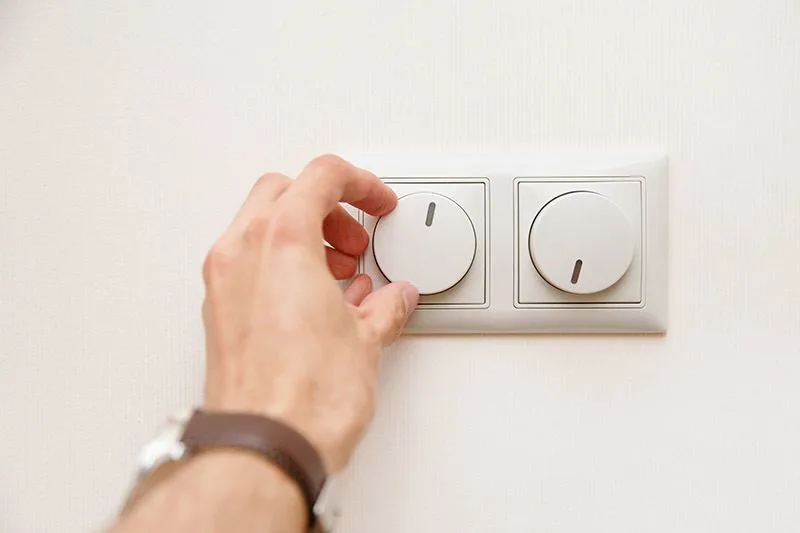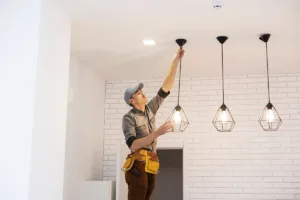What You Should Know About Light Dimmers and Energy Usage in Your Home
Dimmer switches have been a common feature in homes since the early 1960s. They allow you to set the mood of a room by controlling the amount of light produced from the lightbulb. Using a dimmer switch is a great way to change a room’s aesthetic appeal. But when you dim the lights, are you actually saving energy?
Do Light Dimmers Save Energy?
Over the past few decades, lighting technology in homes has become increasingly efficient. Not only do modern light dimmers save you energy, but they also extend the life of your light bulbs!
Dimmers use a “Triac Switch” to rapidly turn a light circuit on and off to reduce the energy flowing to a light bulb. This switch will cut the energy running to the fixture up to 120 times in one second. This will be perceived as a constant flow of light to the human eye, but it is in fact a very fast flickering.
Not All Light Bulbs Work with Dimmers
Newer bulbs like Halogen, CFLs, and LEDs are great at conserving energy and last significantly longer than traditional light bulbs, but they don’t always work with older light fixtures.
This is especially evident if you have ever tried to replace an incandescent light bulb connected to a dimmer with a newer type of bulb. It probably didn’t work! Lightbulbs like LEDs use such a small fraction of energy compared to an incandescent bulb’s normal wattage consumption, that an older dimmer switch may not register it at all.
Using Incandescent Light Bulbs with a Dimmers
You would assume less light would mean less energy is being used – right?
Unfortunately, with some dimmers, that is not always the case. Older light dimmers – also known as legacy dimmers – were designed to be used with traditional incandescent light bulbs. They worked by restricting the flow of electricity to the lightbulb so they would produce less light, but not necessarily save any energy.
When dimmed, the current is reduced by converting the energy into heat instead of light. This decreases the amount of light put out from the bulb, but not the amount of electricity that was being used.
If you are looking to save money on your power bills and conserve energy, ditch those outdated incandescent light bulbs!
Using a Halogen Light Bulb with a Dimmer
Most dimmer switches are compatible with new halogen bulbs but at the cost of a shorter lifespan of the bulb. You will have to replace a dimmable halogen bulb more often, but conserve about 20% more power.
Using CFL Light Bulbs with a Dimmer
CFL bulbs use even less energy than halogen but not all of them work with dimmer switches. Your standard CFL bulb can’t be used in a dimmable fixture so you will have to find one that specifies it is compatible.
Using LED Light Bulbs with a Dimmer
LEDs are the best energy-efficient light bulb for home use, and investing in a dimmer can maximize your energy savings even further. But like CFLs, many LED bulbs will not work with a standard dimmer switch. Using a non-compatible bulb can cause buzzing, flickers, and damage to the light.
Get a Residential Lighting Consultation from Schafer Electric
To ensure you are conserving the most energy in your home with a light dimmer switch, contact Schafer Electric Services, Inc to help determine what set up is best for you. We are an electrical contractor proudly serving homeowners all around the Northern Bay. When it comes to providing top-quality electrical planning, and installation services we make sure to get the job done right the first time.
Contact our expert electricians online today or call us at (707) 545 – 3300 to schedule a residential lighting consultation for your home.






No comments yet. Add the first comment